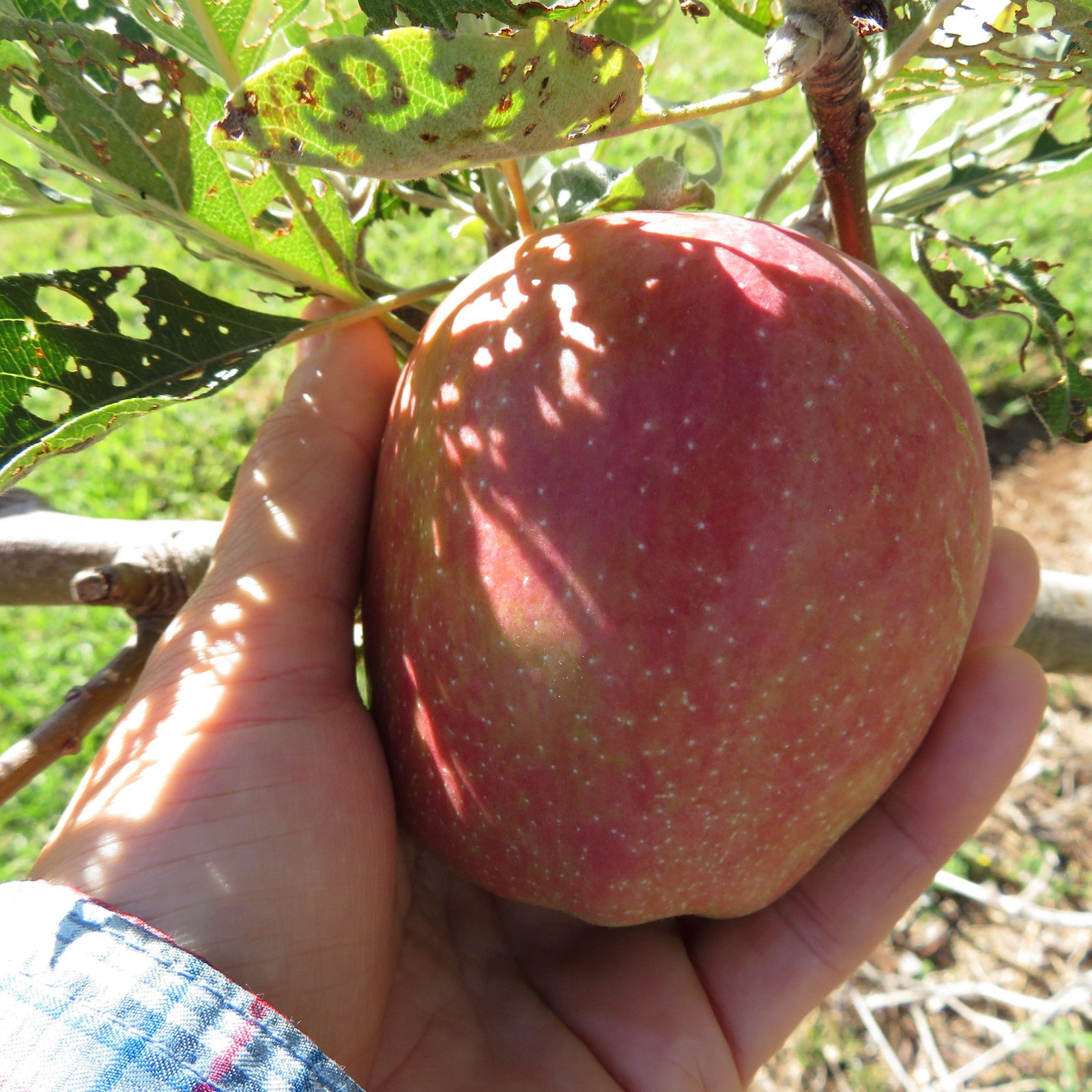-
Description: Anna Apple, also known as Malus domestica 'Anna', is a deciduous fruit tree that belongs to the Rosaceae family. It is a medium-sized tree that typically reaches a height of 10-15 feet (3-4.5 meters) and spreads about 8-12 feet (2.5-3.5 meters) wide.
-
Fruit: Anna Apple produces medium-sized apples that are typically round or slightly conical in shape. The fruit has a smooth and thin skin, which is usually greenish-yellow with a red blush. The flesh is crisp, juicy, and has a sweet-tart flavor. It is excellent for fresh eating, baking, and making cider.
-
Pollination: Anna Apple is a self-pollinating variety, which means it can set fruit on its own without the need for another apple tree for cross-pollination. However, planting another apple tree nearby can increase the yield and improve fruit quality.
-
Harvest Time: The apples on Anna Apple trees are usually ready for harvest in late summer or early fall, depending on the climate and growing conditions. It's important to monitor the fruit's color, firmness, and taste to determine the best time for picking.
|
Type: |
|
|
Origins: |
Central Asia and Afghanistan |
|
Height: |
20' - 25' |
|
Spread: |
20’ - 25' |
|
Spacing: |
20' |
|
USDA Hardiness Zone: |
5 - 9 |
|
Culture: |
|
|
Bloom Color: |
Pink |
|
Season of Interest: |
MAINTENANCE NEEDS: High Maintenance. Water Regularly. Potential issues include apple scab, cedar apple rust, fire blight, leaf spot and and powdery mildew. Possible pests are aphids, maggots, boreres, and spider mites. Most commercially available Apples are grafted onto their rootstock, resulting in dwarf (8-10ft), Semi-dwarf (12-15ft) or standard tree heights all with full sized fruits. Ask the provider the rootstock classification for estimated size. Dwarf stock is easier to maintain and produces fruit at an earlier age.
LANDSCAPE USES: Accents or Group Plantings, Borders, Wildlife Gardens, Shade Tree, Edible Garden, and Container.
COMPANION PLANTS: Apple, Shasta Daisy, Bugleweed
Image: Photo by Forest Starr and Kim Starr, Anna Apple



















































